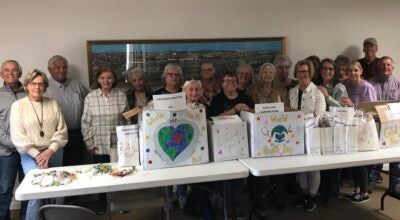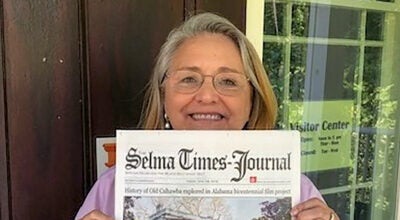Selma’s history shapes identity for the city’s future
Published 9:22 pm Wednesday, July 2, 2014
Afew miles east of the state’s original capital and several miles west of Alabama’s current one sits the most vocal 20,000-population city that the world has ever known.
Selma, sitting on the banks of the Alabama River, is a town that’s undoubtedly the product of its tumultuous past.
Perhaps it began as a group of tents, inhabited by the Muscogee or Creek Indians, but one of the earliest dates of settlement was in the 1730s, when European colonists recorded the city’s location.
The Europeans named the area Ecor Bienville — perhaps paying homage to a Canadian explorer who settled Mobile.
Its name later changed to Moore’s Bluff before finally being incorporated in 1820 with the name Selma. At the same time, a town located a few miles west on the Alabama River — Cahawba — became the state’s first permanent capital.
Four decades after incorporation, Selma became the Dallas County seat.
Selma was a fierce battleground during the Civil War, producing thousands of tons of weaponry for confederate soldiers. Some historical estimates say 10,000 people were needed to manufacture confederate weapons.
Imagine an additional 10,000 jobs in the city today.
Union troops torched portions of the city, but thankfully, many historic structures remain. Some of the historic houses actually were transported from Cahawba following its slow collapse.
The next major historical moment is chiseled into every American history book and is re-enacted every year in March. More recently Selma’s role in the civil rights movement was featured in a major motion picture.
Bloody Sunday, as it’s known colloquially, resulted in dozens of peaceful marchers being beaten by bigoted law enforcement officers.
Selma residents and others who traveled into the city took Bloody Sunday as a challenge, mustering nearly 25,000 people in their successful march to Montgomery.
Selma’s role in the civil rights movement is repeated and honored by nearly every government representative in office. Tourists seem to like commemorating Bloody Sunday too. They travel in large hordes to Selma every March. Smaller groups often take bus trips to walk across the Edmund Pettus Bridge, too.
To outsiders, it seems Selma’s story is entirely composed of an unsuccessful march and economic disparity, but present day Selma is much more than a group of civil rights activists being beaten and certainly not entirely made up of the poor.
Both have lingering effects on the city. The civil rights movement made Selma a more resilient culture that often fights against injustices. Poverty makes some stronger, but also means that an increased amount of people are undereducated and receive government assistance to get by.
Some Selma residents living in relative poverty seem to be indifferent to improving themselves and the appearance of the city, as shown by the hundreds of trash piles on roadways throughout the city. The poverty in Selma could be attributed to many different things. The closure of Craig Field as an Air Force Base is perhaps one reason.
Regardless, a large portion of Selma’s population is afflicted by poverty, and it’s part of the city’s overall culture.
Sure, high school students leave the area for college every year and a select few return for jobs, but it’s obvious that the ones who remain are deeply tied to the city. Some are constantly fighting to improve the overall well-being, but all Selma residents are resilient and influenced by the events of history.





